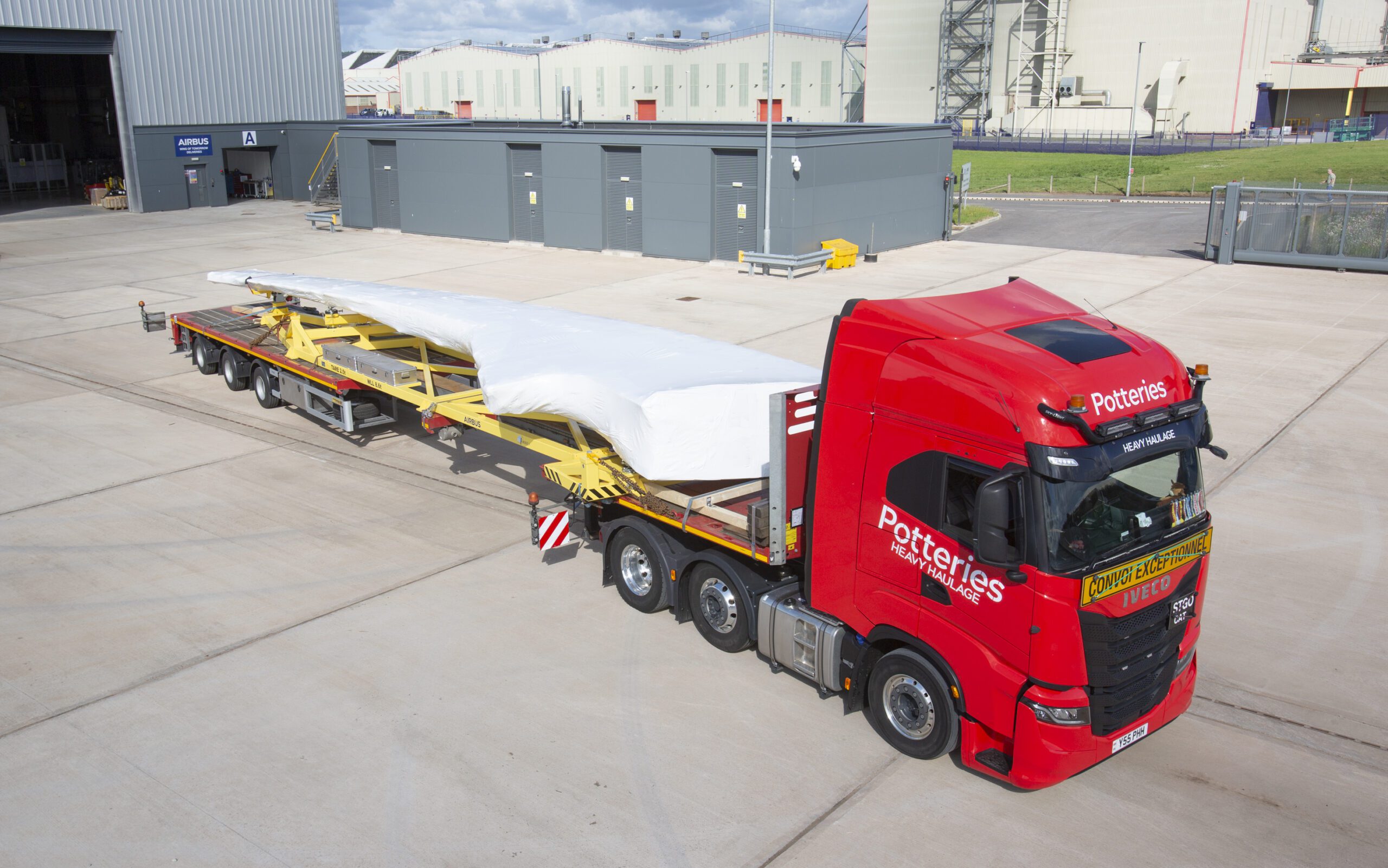
Static wing transferring to Wing Technology Development Centre scaled
Airbus has completed the second of three wing demonstrators in Broughton and delivered it to a new test facility in nearby Filton. The Wing Technology Demonstrator Center (WTDC) was officially opened on Tuesday by the UK Minister of State at the Department for Business and Trade, Nusrat Ghani. Airbus to start testing second Wing of Tomorrow demonstrator.
In the WTDC, wings will be built and tested for various research programs, including the Airbus project Wing of Tomorrow. This should result in new wing designs for future Airbus aircraft that include new materials, enhanced aerodynamics with adaptive configurations, and simplified and cheaper manufacturing.
The second demonstrator wing that has recently been delivered by Broughton is seventeen meters long. It will now be prepared for structural testing at the Aerospace Integrated Research and Technology Center (AIRTeC). Airbus and the UK government jointly invested £40 million in this center. Since 2014, the Aerospace Technology Institute (ATI) awarded £117 million to Airbus for projects that are related to the Wing of Tomorrow program.
At last year’s Farnborough Airshow, Airbus said that the first demonstrator wing had entered testing in Filton. This is the static wing demonstrator used to test the structural capabilities of new designs and materials. The second wing is fully equipped and will test new equipping and installation technologies.
A third demonstrator, the so-called run-rate demonstrator, will test new automation technologies to see how the manufacturing of composite wings can be accelerated. Composite parts currently have a long lead time for production, which is not helpful when you want to assemble airliners at a high monthly rate. Airbus wants to increase the production rate of the A320neo family to 75 per month in 2026, which would not be possible if the aircraft had composite wings.
Other wing concepts
Except for the Wing of Tomorrow program, Airbus is researching other solutions to optimize wing performance. One option is to introduce folding wingtips to reduce the span of aircraft when they are on the ground at airports. The only commercial aircraft with folding wingtips right now is the Boeing 777X.
A more extreme variant of a new wing tip design is that of the AlbatrossOne project. This includes wingtips that can move upwards and downwards to alleviate loads and increase the roll rate, as well as avoid stalling and reducing drag. The configuration has been tested on a model airplane resembling an A320.
Airbus UpNext is researching the eXtra Performance Wing that will be tested later on a remotely controlled Cessna Citation VII business jet. This concept includes gust sensors, pop-up spoilers, and multifunctional trailing edges that give the wing active control.
Airbus launched the Wing or Tomorrow program in 2016 and flew the BLADE concept with laminar flow control on an A340 in 2017. All concepts should lead to new wing designs for future Airbus aircraft, with a new single-aisle airliner with or without hydrogen technology to be introduced somewhere in the middle of the next decade.
Views: 17



